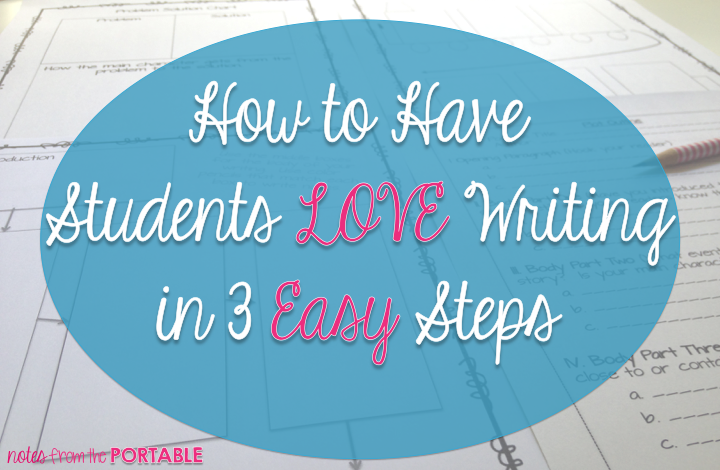
Do you get a collective sigh when time to writing is announced?
I know many of you have a limited writing time and are pushed to focus on teaching students how to write for a writing assessment. However, making time to teach narrative writing can build those writing skills, make writing more fun, and have students perform better on the writing assessments.
Creative writing is fun. It allows for choice and it lets students to try out new things.
When teaching students creative writing it is important to give them time to plan and think about what they are going to write before they start the first sentence.
Mapping out character, setting, and plot can help writers understand what they are going to write.
Narrative Writing Step 1. Creating Memorable Characters
Creating a character is one of the most important parts of the fiction writing process. The character is what drives the story. If the readers care about the character they will keep reading.
When students are writing the character should be a best friend to them. It should be someone they know really well! They should know the characters favorite food, color, what they fear, what they love, and much more.
I create a questionnaire with my students each year. I give the name of my character and the students start asking questions about this person. I write the question and then create a creative answer. Then take the list of questions they asked and have them answer the questions for their character.
Get the FREE questionnaire I use below. The video will give you more information about developing character.
Get the character questionnaire I use.
By taking the time to get to know characters they are thinking through details before they start writing. This is a great tool for writing assessments because it gets students in the habit of asking questions and writing the details they know about a topic before they begin drafting.

Sign Up Here to Download the Character Questionnaire.
Narrative Writing Step 2. Developing a Setting
Setting is the part many students skip. They don’t think about where and when the story takes place and as a result details jump around and confuse the reader. To help students fine tune their setting I have them complete several tasks.
Setting Map
With the setting map students draw a map of the world the character lives. If the story takes place in a specific season, then I have students draw details to show that season. If the story takes place 150 years ago, students draw the details appropriate to that time period.
This is a lesson I like to do on my Interactive White Board. I have my students call out questions and I draw as I go. I also think aloud as I draw the details I don’t want to forget and to model how I plan my own writing.
Setting Questions
For the students who need a little more focus or those who don’t enjoy drawing, I have them answer questions to help them narrow down when and where the story takes place.
Taking time to plan the setting helps students on writing assessments by making them think about the when and where an event or story takes place. Students will learn that the action of their writing doesn’t take place with a white background.

Narrative Writing Step 3. Mapping Out the Plot
Students get excited, they have a lot of ideas, and they dive right into the writing. Unfortunately many of them get a few sentences in and get stuck. They aren’t sure which path they are taking. I have two ways I use to help students plan the plot before they tackle the first sentence.
The Writing Guide
This is great for grades 1-3. I like to use colored pencils to help them learn about new sentences in the lower grades and about paragraph development in other grades.
The Plot Outline
This is great for 4th-6th grade. They learn about outlining and are able to organize their writing in a way.
Using these two methods are great for the writing assessments because students have tools they can easily recreate to plan their writing. After practicing this tool all year the students really get in a habit that you will see them using in all genres of writing.

I have all of these prepared and ready for you to use for your next writing unit. Use these Writing Guides and Graphic Organizers to get your Writer’s Workshop up and running.

Want to learn more about running a successful writer’s workshop? This post 4 Ways to Run a Successful Writer’s Workshop may help. You will also find free conferencing guides.
For more ideas and tips follow me on Pinterest.
Would you like to have 15 + weeks of writing and grammar skills already planned for you? These bundles contain everything (except the published books suggested) to teach writing. No cutting or pasting needed. Just print, teach, and inspire writers! All of these forms PLUS exemplars, detailed lessons, and assessments are included. OVER 600 PAGES! (Just click the image to learn more and download a preview.) If you are looking for a specific genre of writing head to my Writer’s Workshop section of my store to find detailed units.




[…] Take time to develop characters with this Character Questionnaire. […]